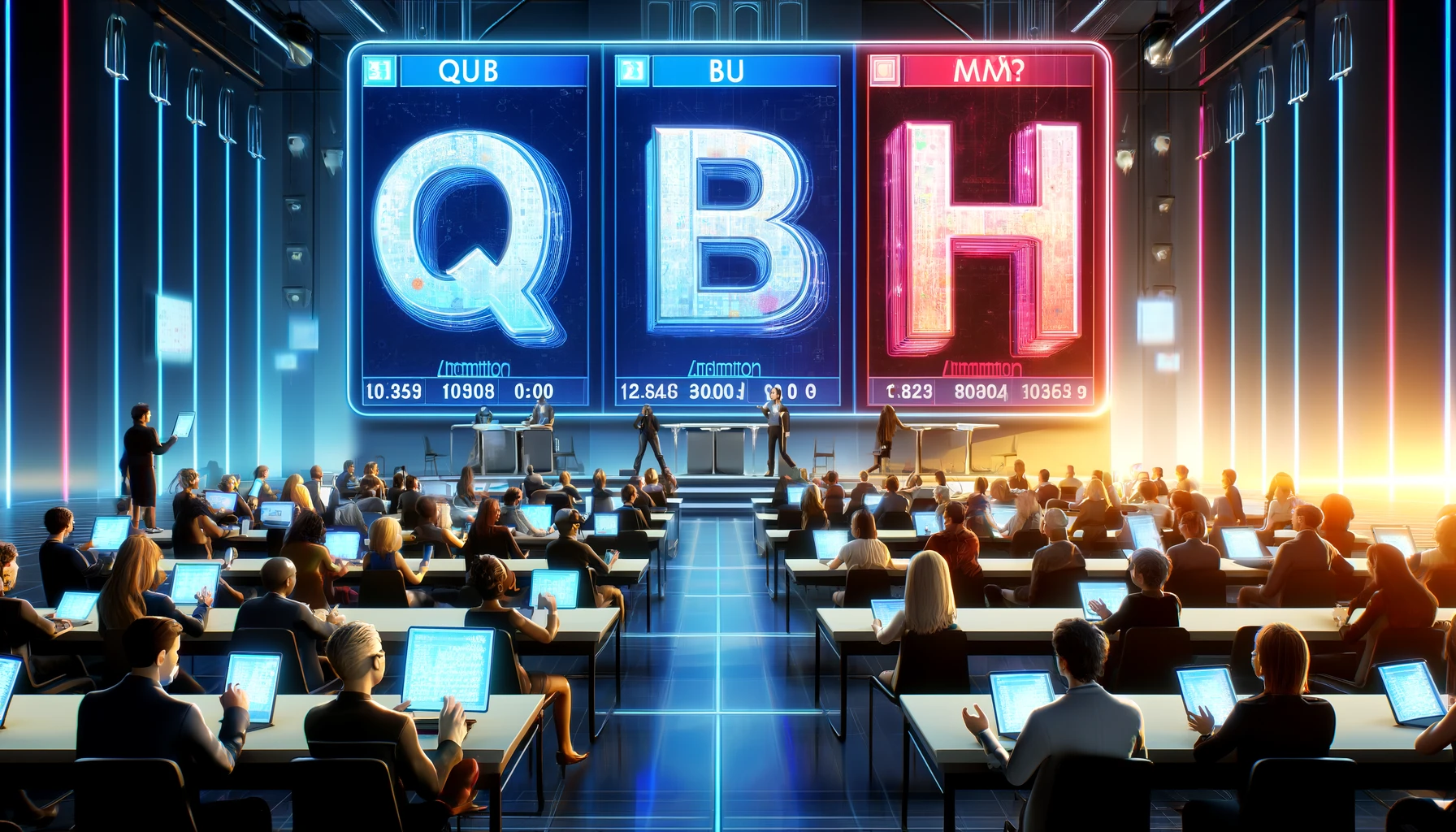10 min to read
HandyCon 2024
Coverage of HandyCon 2024 Event

HandyCon 2024 Recap: A Deep Dive into Handshake’s Conference
We just concluded our 4th Handshake conference and wanted to share some highlights from this year’s event.
Welcome Session
The conference began with a reflection on the past four years of HandyCon and Handshake community projects. We have come a long way.
Jehan remarked, “Domains and decentralized domains will be the dominant form of real estate for the digital future.” While Handshake is not yet widely recognized, Jehan emphasized the importance of breaking out of our bubble, reaching out to others, and forming partnerships. He stressed the need to diversify our community by adding more partners and exploring how Handshake can be useful to other protocols and technologies. By 2025, we aim to have significant progress to report. We need to think bigger, expand our reach, and integrate Handshake with other applications.
Link to the full talk: here
Post The Happening
An intriguing session was the panel discussing “Post The Happening” and its implications for Handshake moving forward. The panelists discussed the amount of $HNS burned and the bids during the auction period, indicating that Handshake is alive and well. The unique Vickery auction model of Handshake was highlighted, where everyone has a fair chance to get a name. Bidders had to be strategic, as many premium names became available at once, offering great opportunities.
There were also discussions about securing organizational or project names for future gifting. For instance, Pei Hsun Kao from Dott Domains secured some Taiwanese company names for future gifting. The topic of DNS utility was mentioned, noting that even if a company received an HNS name, they might not know what to do with it, highlighting the importance of Handshake’s utility.
Alex, the moderator, noted that “The Happening” is still ongoing, with many interesting names still available. Nole from Hey.tx described it as “a spark and the beginning of something new.” The panel also discussed bidding strategies and concluded that staying away from trademark names is advisable unless intending to gift them.
Link to the full talk: here
Navigating Legal and Trademark Safeguards for Web3 Domain Investments
Tom Barrett from Encirca discussed the Escrow service he provided with .music to the ICANN registry operator, emphasizing the importance of having domain names in the right hands. He talked about the need to shift from “Experimentation” to “Commercialization” in domain-name investments, moving towards general wealth.
His investment thesis included points such as:
- The internet is built on DNS, the glue that makes Web3 possible.
- Web3 investments extend DNS, not replace it.
- The next utility version extends the Web2 domain, not replaces it.
- Avoid DNS abuse, especially registering names with trademarks.
- Public safety is paramount.
- Successful investments avoid deceptive activities.
- Free speech has limits.
Tom encouraged responsible DNS integration and Web3 naming support for public safety. He raised the open-ended question of what happens if someone tries to trademark Handshake TLDs, as seen with .wallet on Handshake and Unstoppable Domains.
Bridging Web2 and Web3: What Does Web2.5 Look Like?
This panel explored the bridge between traditional ICANN names (Web2) and ENS/Handshake names (Web3). Paul Singh shared insights about the recently acquired .login/ name, mentioning that login.in receives the most traffic and that every website needs a login. The hesitation lies in choosing the right registrar.
Chad Folkering believes Handshake is beyond Web3, describing it as a Web 4.0 protocol. He argued that Web2.5 is building a Web3 system on a Web2 asset (ICANN), whereas Handshake TLDs represent a cypherpunk Web3 landscape with many more opportunties (such as fractionalized ownership of digital assets). Once decentralized storage and compute become more ubiquitous, Handshake will be integral to the new internet.
Trademark issues were also discussed, with Chad mentioning his attempt to trademark .chain on Handshake and its rejection. He emphasized that on-chain identity is more important than trademarks. Paul believes collaboration with ICANN is essential to avoid collisions when new TLDs are released.
Identity is crucial, especially with AI, deepfakes, and profile manipulations. Handshake offers a potential solution, but these names do not resolve in traditional browsers yet, they require special browsers or resolvers. Paul suggested crowdfunding to get .hns on ICANN to resolve in traditional browsers.
Todd mentioned that Web2 companies can transition into Web 2.5 or Web3 by tokenizing or fractionalizing digital assets. Handshake has identity, but lacks distribution, while ICANN has distribution, but is centralized. The future may involve fractionalized domain name ownership.
Link to the full talk: here
Loadpipe: Bridging Web3 & E-commerce
Beau Troxclair discussed the future of e-commerce on the blockchain, starting with why Amazon’s model is flawed due to predatory pricing and opaque ToS. Unlike Amazon, the crypto marketplace offers more layers for e-commerce: payments, multi-sig dispute resolution, internally tracked points, etc. Loadpipe aims to build an ecosystem to take back our online, social, and data sovereignty.
Loadpipe is building a multi-vendor marketplace, a shadowy e-commerce protocol for on-chain vendor profiles, decentralized product catalogs, and trustless transaction settlement. The protocol is inspired by the Lens Protocol on the Polygon chain, allowing for on-chain profiles, products, and reputation. A DAO will govern the marketplace, replacing traditional corporate structures with transparency.
This ecosystem allows users to “Buy, Sell, and Own” the system, promoting participation across more jurisdictions.
Link to the full talk: here
Beachfront/ — Registrar For The Neue Internet
Paul Webb addressed common challenges in Handshake adoption: availability (websites), usability (infrastructure), and scalability (resolution and adoption). To mitigate these, he encouraged building more websites using Handshake and creating content to onboard new users, we need to “just BUIDL”.
He showcased his registrar Beachfront where Paul demonstrated the domain registration process, from searching for names to processing payments via Stripe. After payment, DNS records are created, and the new name appears on a parked page. He expects all names to become available within a year.
Future projects include HIP-0002 to map wallet aliases with Handshake names, a Handshake to Web2 email bridge solution, and “Pastry,” the Beachfront cloud platform. Paul urged attendees to use their domains actively.
Link to the full talk: here
Joseon/ - The First Legally Recognized Nation to Use HNS Domain
Andrew Lee discussed .Joseon and the Joseon Empire, a legally recognized nation-state. He provided an overview of the Joseon dynasty and its defined territories, including cyberspace. Joseon allows registered companies to issue shares as securitized JRC-20 tokens on the Joseon Blockchain, regulated by the SEC of Joseon.
Joseon introduces “Denizenship,” where individuals can operate corporations in Joseon while physically residing elsewhere. This bridges the world of law and the digital world of freedom. Owning .joseon on Handshake means relying on a trusted, non-human third-party entity to manage domain names tied to cryptographic keys.
Andrew showcased “DwebChat,” a proof-of-concept chat application available on GitHub. He emphasized that while we can’t guarantee the future, we can build the pillars for it with Handshake.
Link to the full talk: here
Handshake Chatbot
Sajan Nair from Agaamin Technologies presented a Handshake-specific chatbot using ChatGPT’s API, tailored for the Handshake community. It answers questions about Handshake and related Handshake organizations like Namebase. It can give detail instructions on how to set up a full listening node for Handshake on AWS. Furthermore, the chatbot integrates with HNS Search /search <search query>, making it both a chatbot and a search engine for Handshake. Users can request the chatbot to learn new information with /add <source>. A very promising project in the Handshake ecosystem
Link to the full talk: here
Stateless DANE
This talk focused on Stateless DANE, a proof-of-concept client that allows secure browsing of Handshake websites over TLS without a constant connection to an HNSD instance. Based on the HIP-0017 proposal and inspired by letsdane, it sets up a proxy server that resolves hostnames, checks certificates, and outputs self-signed certificates.
Stateless DANE verifies record data up-to-dateness by checking the Urkel proof and updates the last 40 tree roots daily. This concept replaces the need for regular certificates in domain names and IP addresses.
This highly technical talk deserves its own article, which we will follow up on soon.
Link to the full talk: here
dWeb Camp
Eric Bear presented Dweb Camp, an annual gathering in the woods north of San Francisco for Web3 enthusiasts. The event focuses on collaboration, challenging ideas, and networking. Tracks include AI, governance, distributed systems, economics, and more. Side events like star-gazing and social activities foster relationship-building.
Link to the full talk here
Namelayer
Andrew Lee’s new company “Namelayer” hopes to work with influencers and content creators to help them grow their communities. Content creators are a huge part of online business, with Mr. Beast being a top example. Influencers like Andrew Tate or Luke Belmar have strong paid niche communities, representing a cultural paradigm shift where identity anchors go beyond nationality or religion and focus more on values, passions, and interests.
Namelayer aims to provide solutions for content creators with multi-chain interoperable names (using Handshake TLDs on Optimism, Arbitrum, Blast, and Ethereum) and social tooling to grow their communities. In the first phase, Namelayer will integrate off-chain registry tools into content creator platforms and enable community members to set up profiles on the SLDs. Features will extend the capabilities of these social profiles within the community, including metadata, POAPs, points, etc. The last phase will involve decentralizing the infrastructure on P2P networks, launching a DAO, and a governance token.
Link to the full talk: here
MASQ: Bringing Web3 & Privacy Into The Browser Space
One key Handshake integration this year has been the MASQ browser. Kauri Hero presented an overview of MASQ, a web browser that prioritizes privacy. MASQ is building user resilience through a privacyOS browser experience, preserving digital personal value. Kauri shared the roadmap to resolve Handshake names natively and offer a marketplace within the browser where Handshake apps such as Bob wallet will be available. MASQ has a clean, futuristic UI with a built-in dVPN for private browsing and is exploring the native integration of Stateless DANE and HNS Search for a seamless Handshake experience.
Link to the full talk: here
Missing Players during the Conference
We would have loved to see Superlink and what they have been up to lately. Other than Jehan at the Welcome Session, there was no talk or panel from Superlink.
Conclusion
HandyCon 2024 showcased the exciting developments and future directions for the Handshake community. From technical innovations to legal and commercial strategies, the conference highlighted the importance of collaboration, innovation, and responsible growth. As we look forward to the next year, let’s continue to expand our reach, integrate Handshake with other applications, and build a decentralized future together.
We hope you enjoyed HandyCon 2024 and look forward to seeing you next year!



Comments